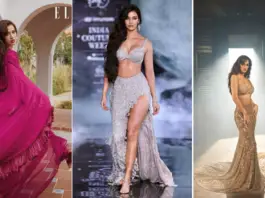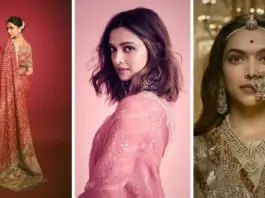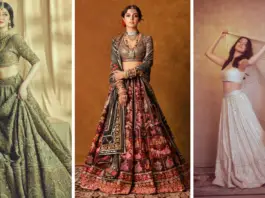Description
India has a large population and ancient civilizations and is a popular destination for tourists and expats due to its rich cultural and historical heritage.
Introduction
First of all, a big thank you to all of our loyal readers for taking the time to read our posts. Similarly, in this article, you will read about the Best of the Indian Lifestyle: Food, Fashion, Culture and other facts.
At the same time, we are glad to give you the information regarding the Best of Indian Lifestyle: Food, Fashion, Culture and other facts. Please read the essay from beginning to end patiently to know more about it.
About The Best of Indian Lifestyle: Food, Fashion, and Culture
Culture is all about people’s way of living life. It also includes their other habits, such as what they eat, how they worship, how they speak, and how they dress.
Indian culture, therefore, is the Indian way of life. India’s culture is incredibly diverse due to its diverse population. The culture of India is a combination of numerous cultures from distinct castes, faiths, and regions, each of which has its traditions and culture.
Indian Culture India, one of the oldest cultures, has an urban civilization dating back to the Bronze Age. From 3300 to 1300 BC, the Indus Valley Civilization (also known as the Harappan Civilization) demonstrated unity amidst a wide range of cultural variations. Indians’ way of life reflects their culture.
Togetherness in variety: People from various sects, castes, and faiths coexist in India, a country that values togetherness in variety. India is known as the land of unity in diversity as a variety of groups of people cooperate to live in a single society. India’s strength is now its diversity and unity.
Secularism: Secularism means equality, and impartiality, towards all religions. India is a secular country, which shows equal treatment of all the religions in India.
Elders’ feet being touched: Indian custom has a rich cultural heritage. Younger people in India have a deep reverence for their elders. They touch the feet of their elders daily after waking up and on festive occasions or before starting important work.
Namaste: The salutation “Namaste” is a component of Indian culture. “Namaste” is used as a form of greeting, and people clasp hands. “Hello” is pronounced “Namaste”. (Read more about the definition of namaste here.)
When speaking, the majority of Indians have a likelihood of shaking their heads.
Fasting: Hindus fast during religious occasions like Maha-Shivratri, Diwali, and Karvachauth, while women fast for their husband’s long life. Ramazan is a 30-day fasting period for Muslims.
Atithi Devo Bhava: In India, people feel great when a guest comes to their home. They greet their guests with respect and with utmost care. The idea of “Atithi Devo Bhava,” which translates to “The Guest is Considered Equal to God,” is held dear by Indians.
Vedic Mantras: Chanting of ancient Vedic mantras is common practice during all religious events. Some mantras are repeated several times by the priest and other devotees and are incorporated as part of the puja.
Yoga and Meditation: Yoga and meditation are ancient practices that promote bodily, mental, and spiritual well-being through breathing and postural exercises. Meditation, also known as Dhyan in Hindi, focuses inwards, offering immense health benefits and global popularity.
Food
Food (Cuisine)
Culinary traditions – Indian food is a unique blend of cultures and ages, reflecting the influence of various civilizations. Its spiciness is a significant feature, with spices used abundantly in both North and South India. Each spice in Indian dishes has nutritional and medicinal properties, contributing to its overall development and present form.
From ultra-spicy food to delectable confectionery and southern curries flavoured with kokum, Indian culinary culture is delicious and diverse.
Not only in taste but also in the way of cooking, Indian foods are different from the rest of the world. Indian cuisine is the ideal combination of culture, tradition, and affection. It is evolving for ages and that’s why there are different forms of Indian food. There are various types of Indian cuisine available depending on the state and location, including Bengali and Gujarati cuisine.
Indian cuisines are characterized by spices and ingredients, with North Indian food focusing on bread, East Indian food on staples and sweets, and South Indian food on rice-based dishes. The majority of Indian dishes must have chilli.
Fashion
Covid-19 has impacted Indian fashion and lifestyle, emphasizing health, financial resources, and conscious practices. This has led to increased demand for sustainable, eco-friendly products, driven by the wedding boom, health and beauty start-ups, and external support.
New Wedding Trends
The post-covid wedding boom in India has transformed the fashion and lifestyle industry, enabling year-round weddings and increasing demand for versatile, seasonless couture. Indian brands can capitalize on this opportunity by offering sustainable and eco-friendly options.
Increased Focus on Sustainability
The Indian fashion industry is transforming due to growing interest in sustainable fashion, eco-friendly materials, and ethical production practices. Brands promote slow fashion and veganism, attracting consumers and establishing ethical standards across industries.
A Rise in Women Leadership
Post-Covid, women are leading innovation in lifestyle sectors, with women-led businesses in health, beauty, and fashion growing due to home-based start-ups. This has taught entrepreneurs that small businesses can lead to success, with many brands using natural and organic materials.
Improved Purchasing Power
The pandemic impacted businesses but also boosted financial growth and increased purchase power. People became more aware of market supply and product availability, leading to conscious buying and increased spending on quality, design, and value-for-money products.
Business owners are attracted to innovative concepts that encourage expansion
The pandemic has led to businesses scaling globally, establishing e-commerce platforms, efficient delivery, and personalized services, and transforming the Indian fashion and lifestyle industry by offering sustainable, eco-friendly, and value-driven products.
FAQ (Frequently Asked Question)
Which Indian food culture is the best?
South India is renowned for its delectable and magnificent food culture and is regarded as the spice capital of the world. Every South Indian cuisine combines diverse flavours and spices with a dash of Indian culture.
How does Indian culture manifest itself?
The concepts of “karma” (activity) and “dharma” (the righteous manner to carry out one’s duties) are fundamental to Indian culture. In all Indian actions and deeds, “karma” and “dharma” have always been accorded the utmost priority.
What is the most well-known Indian outfit?
Women in the Indian subcontinent typically wear saris. A sari is a piece of unstitched cloth that can range in length from four to nine metres and is worn in different ways around the body.









Indian food is amazing! So many flavors and textures to explore.
I’m always learning something new about Indian history and mythology.
Indian fashion is so vibrant and stylish.
I love the way Indian weddings are so colorful and festive.